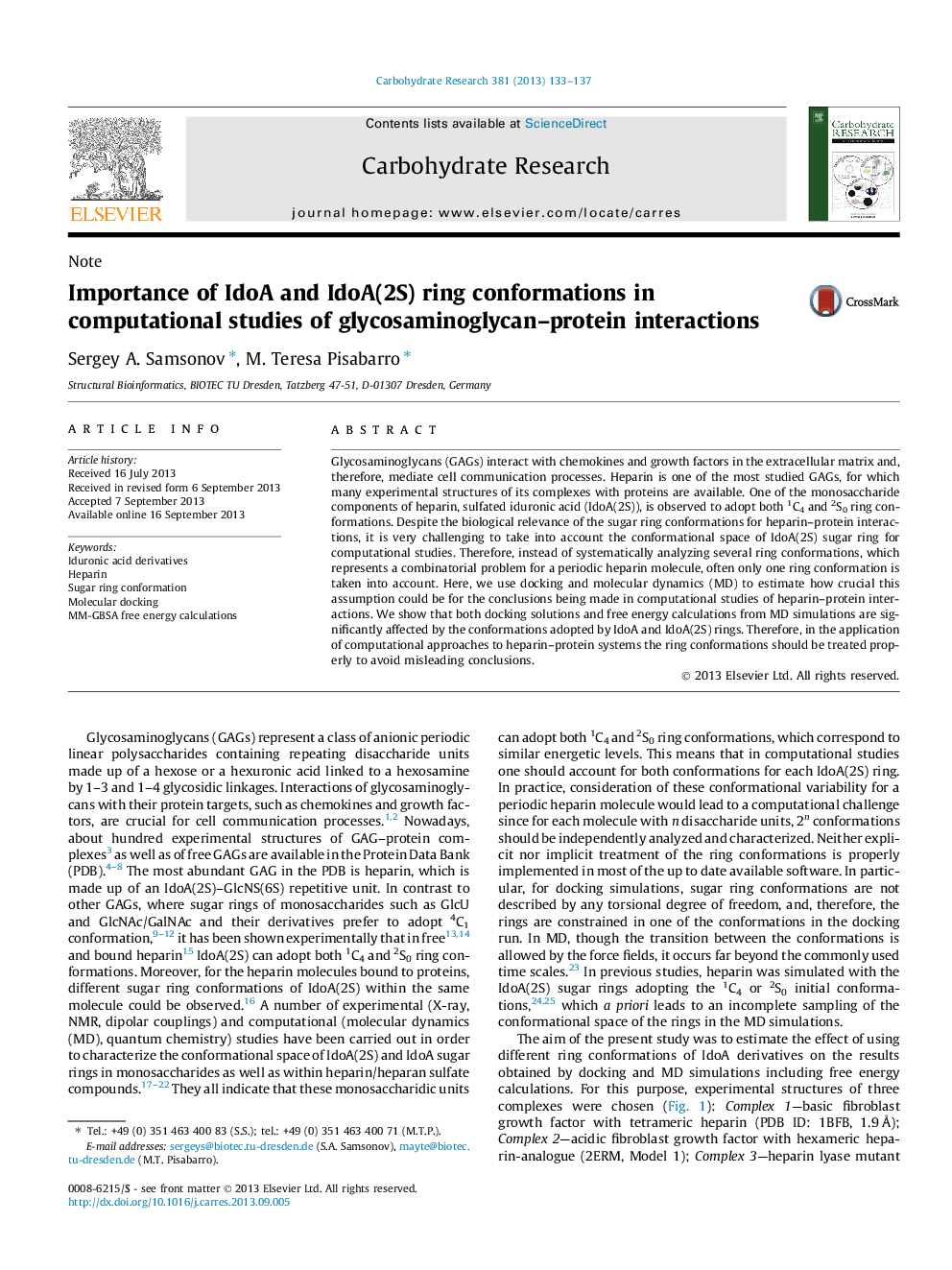| کد مقاله | کد نشریه | سال انتشار | مقاله انگلیسی | نسخه تمام متن |
|---|---|---|---|---|
| 1390250 | 1500870 | 2013 | 5 صفحه PDF | دانلود رایگان |

• IdoA/IdoA(2S) ring conformations are studied in heparin–protein systems in silico.
• The choice of a ring conformation in ligand significantly affects docking results.
• Change of ring conformations is crucial for MD-based free energy calculations.
Glycosaminoglycans (GAGs) interact with chemokines and growth factors in the extracellular matrix and, therefore, mediate cell communication processes. Heparin is one of the most studied GAGs, for which many experimental structures of its complexes with proteins are available. One of the monosaccharide components of heparin, sulfated iduronic acid (IdoA(2S)), is observed to adopt both 1C4 and 2S0 ring conformations. Despite the biological relevance of the sugar ring conformations for heparin–protein interactions, it is very challenging to take into account the conformational space of IdoA(2S) sugar ring for computational studies. Therefore, instead of systematically analyzing several ring conformations, which represents a combinatorial problem for a periodic heparin molecule, often only one ring conformation is taken into account. Here, we use docking and molecular dynamics (MD) to estimate how crucial this assumption could be for the conclusions being made in computational studies of heparin–protein interactions. We show that both docking solutions and free energy calculations from MD simulations are significantly affected by the conformations adopted by IdoA and IdoA(2S) rings. Therefore, in the application of computational approaches to heparin–protein systems the ring conformations should be treated properly to avoid misleading conclusions.
Figure optionsDownload as PowerPoint slide
Journal: Carbohydrate Research - Volume 381, 15 November 2013, Pages 133–137